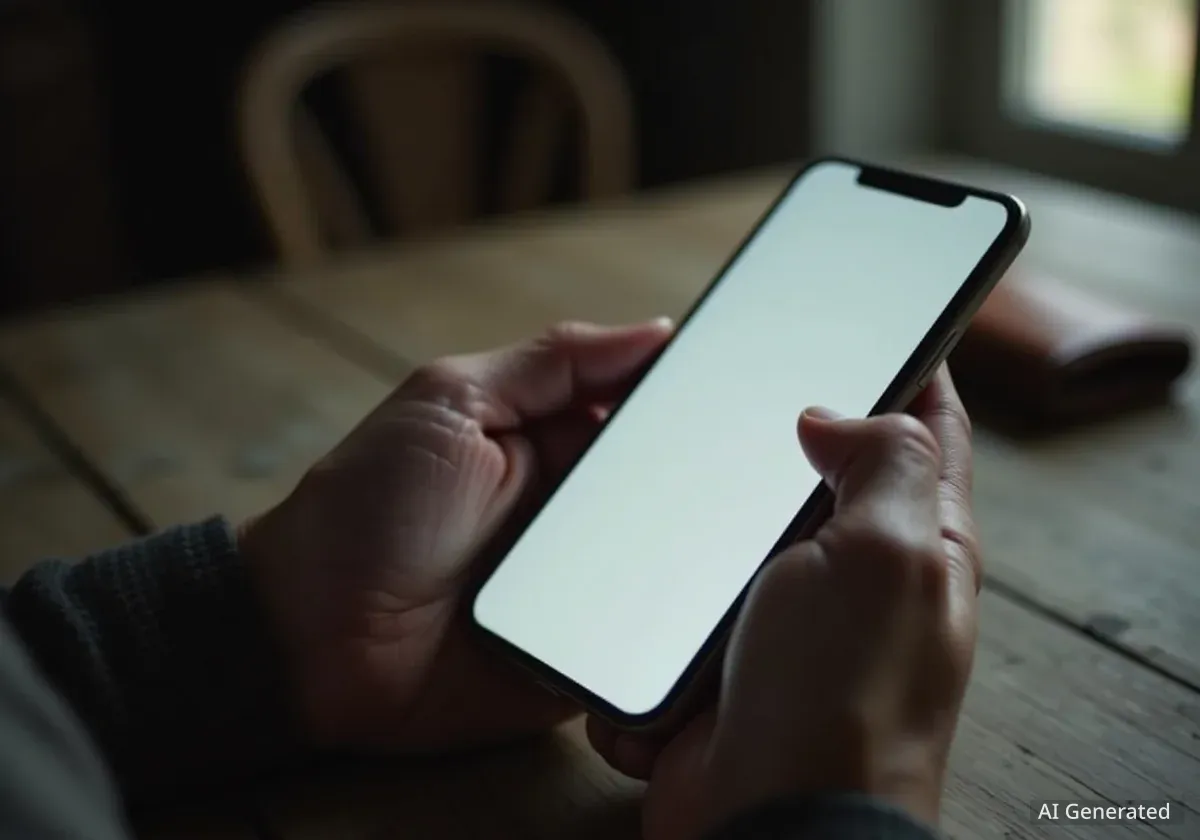An American retiree has reported the loss of over $3 million worth of XRP, representing nearly his entire life savings, after his digital assets vanished from a mobile wallet application. The incident, which has been analyzed by on-chain investigator ZackXBT, highlights the critical security risks associated with improper handling of cryptocurrency hardware wallet credentials.
Key Takeaways
- A 54-year-old retiree lost approximately 1.2 million XRP, valued at over $3 million, which constituted his retirement savings.
- The loss is attributed to the user importing a hardware wallet's secret seed phrase into a mobile app, effectively converting secure cold storage into a vulnerable hot wallet.
- On-chain analysis traced the stolen funds through a swap service and multiple blockchains to over-the-counter (OTC) brokers in Southeast Asia.
- The wallet provider, Ellipal, stated its hardware devices remain secure and pointed to user error as the cause of the compromise.
A Life Savings Disappears
A retiree from North Carolina, who identified himself as Brandon, discovered his substantial XRP holdings were gone on October 15. He stated that the funds, accumulated since 2017, were intended to fund his and his wife's retirement, including plans to purchase a home.
In a series of public videos, Brandon detailed the event, explaining that the theft occurred on October 12. The attackers first performed two small test transactions of 10 XRP each before draining the main balance of approximately 1,209,990 XRP.
Details of the Loss
- Asset Stolen: ~1.21 million XRP
- Estimated Value: Over $3 million
- Date of Theft: October 12
- Date of Discovery: October 15
The attackers moved the funds to a newly created address and then rapidly dispersed them across hundreds of wallets to obscure their trail. Interestingly, smaller balances of other assets, including about $1,000 in XLM and $900 in FLR, were left untouched in the wallet.
Following the discovery, Brandon reported the incident to the FBI’s Internet Crime Complaint Center (IC3) and local law enforcement agencies. He has shared his story publicly to warn other cryptocurrency holders about potential security pitfalls.
The Critical Mistake: Hot vs. Cold Wallet Security
The central issue in this case appears to be a misunderstanding of the fundamental principles of cryptocurrency cold storage. Ellipal, the manufacturer of the hardware wallet used by the investor, released a statement on October 18 addressing the incident.
According to Ellipal, their investigation suggests that the user imported the hardware wallet's secret seed phrase directly into the Ellipal mobile application. This single action fundamentally compromised the security of the funds.
Understanding Wallet Types
Cold Wallets (like hardware devices) keep private keys completely offline, making them immune to online hacking attempts. Hot Wallets (like mobile or desktop apps) are connected to the internet, offering convenience but exposing private keys to potential online threats like malware and phishing.
Ellipal explained that when a seed phrase from a cold wallet is entered into any internet-connected device, such as a phone or tablet, it ceases to be "cold." The private keys are recreated and stored on that device, effectively turning it into a less secure hot wallet.
"If a cold wallet’s seed is used on a phone or tablet, the seed and resulting private keys would be stored on that device, effectively making it a hot wallet and greatly reducing security," Ellipal stated in an email to the user.
Brandon confirmed he used the Ellipal app on both an iPhone and an iPad. He noted a key visual difference that he was unaware of at the time: the app on his iPhone showed a blue background, which indicates a secure connection to the air-gapped hardware wallet. The app on his iPad, however, displayed an orange background, which Ellipal confirmed signifies a hot wallet created by importing a seed phrase.
Ellipal has maintained that its hardware devices have not been breached and that no thefts have originated from the air-gapped hardware itself.
Tracing the Stolen Funds Across Chains
Pseudonymous on-chain analyst ZackXBT took up the case, tracing the movement of the stolen XRP. In an October 19 thread, he detailed the path the attackers took to launder the digital assets.
The investigation revealed that immediately after the theft on October 12, the attacker executed over 120 transactions to convert the XRP into Tron (TRX). This was done using Bridgers, a cross-chain swap service previously known as SWFT.
The Laundering Path
- The 1.21 million XRP was sent from the victim's wallet.
- The funds were swapped from the Ripple ledger to the Tron blockchain via Bridgers.
- All converted funds were consolidated into a single Tron wallet address.
- By October 15, the funds were dispersed to various over-the-counter (OTC) brokers.
ZackXBT noted that these OTC brokers are associated with Huione, an online marketplace in Southeast Asia that has been mentioned in recent actions by U.S. authorities. This complex path, involving multiple blockchains and unregulated brokers, makes recovery extremely difficult.
Key Lessons and Warnings for Investors
This incident serves as a stark reminder of the importance of proper security practices in the digital asset space. The core lesson is unambiguous: never type, photograph, or otherwise input your hardware wallet's seed phrase into any online device.
Best Practices for Cold Storage
- Guard Your Seed Phrase: Your seed phrase is the master key to your crypto. Keep it offline, stored securely on paper or metal. Never store it digitally.
- Understand Your Tools: Know the difference between a hot wallet and a cold wallet. A hardware wallet is only secure if its keys remain offline.
- Use Separate Wallets: Use a distinct, separate seed phrase for any hot wallet you use for frequent transactions. Keep large, long-term holdings in a secure cold wallet.
- Consider a Passphrase: For added security on high-value wallets, use a BIP39 passphrase (sometimes called a "13th or 25th word"). This adds another layer of protection that is not stored on the hardware device itself.
ZackXBT also issued a caution regarding recovery services. He stated that most firms advertising the ability to recover stolen crypto are predatory, often charging significant fees for superficial reports without any real chance of success.
While rapid reporting to legitimate investigators and exchanges can sometimes result in funds being flagged or frozen, recoveries are rare once assets have been moved through cross-chain swaps and OTC desks. For Brandon, the loss has been devastating, wiping out what he considered his and his wife's entire retirement plan. He continues to share his experience to prevent others from making a similar, costly mistake.





